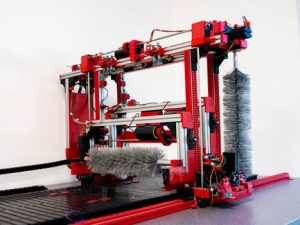Smart Fabrics: Weaving Technology into Fashion
Imagine a world where your clothes could do more than make a fashion statement. A world where your t-shirt could monitor your heart rate during a run or your dress could change color with a tap on your phone. This may sound like something out of a science fiction movie, but thanks to advances in technology, it is becoming a reality. Smart fabrics, also known as electronic textiles or e-textiles, are revolutionizing the fashion industry by incorporating technology into the very fabric of our clothes. Let’s take a closer look at how smart fabrics are weaving technology into fashion.
What are Smart Fabrics?
Smart fabrics are fabrics that have been infused with technology to enhance their functionality. These fabrics are created by combining traditional textiles with advanced materials such as sensors, microchips, and conductive threads. The result is a fabric that can sense and react to changes in its environment, making it more than just a piece of clothing.
The concept of smart fabrics may seem new, but they have been around for decades. In the 1980s, researchers at MIT began experimenting with embedding sensors and microchips into fabrics. However, it wasn’t until recent years that smart fabrics started gaining traction in the fashion industry. With the rise of wearable technology and the demand for functional clothing, smart fabrics are becoming more popular than ever.
The Benefits of Smart Fabrics
Smart fabrics have a wide range of potential applications, making them highly beneficial for both the fashion industry and consumers. One of the biggest advantages of these fabrics is their ability to collect and transmit data. This makes them perfect for a variety of functions, such as tracking health and fitness, monitoring environmental factors, and even controlling devices.
In terms of fashion, smart fabrics offer endless possibilities for designers. They allow for the incorporation of new features and functions into clothing, making it more versatile and multi-functional. This means that a single garment can serve multiple purposes, providing convenience and efficiency for the wearer.
Examples of Smart Fabrics in Fashion
Some of the most exciting developments in smart fabrics are happening in the fashion industry. Let’s look at some of the ways in which technology is being woven into our clothing:
1. Biometric Clothing
Many smart fabrics are designed to monitor our health and fitness. Biometric clothing, such as shirts with built-in heart rate monitors or sports bras with sensors to track breathing and body temperature, are becoming increasingly popular. These fabrics make it easier for athletes and fitness enthusiasts to track their performance and stay on top of their health.
2. LED Clothing
LED clothing is taking fashion to a whole new level. These fabrics use LED lights to create stunning designs and patterns on clothing. They can also be functional, such as LED jackets with built-in turn signals for cyclists or LED dresses with screens that display tweets or photos.
3. Temperature-Regulating Fabrics
Another practical application of smart fabrics is their ability to regulate the temperature of clothing. These fabrics use tiny threads that contract and expand in response to temperature changes, keeping the wearer warm or cool as needed. This is especially beneficial for outdoor enthusiasts, allowing them to stay comfortable in extreme weather conditions.
The Future of Smart Fabrics
The potential for smart fabrics is endless, and we are only scratching the surface of what they can do. As technology continues to advance, we can expect to see even more innovative uses of these fabrics in the fashion industry.
One exciting development is the integration of technology directly into the fabric during the manufacturing process. This means that instead of adding sensors or chips to clothing after it is made, the technology will be woven into the fabric itself, making it less visible and more comfortable to wear.
Additionally, we can expect to see more collaboration between fashion designers and technology companies. As these industries merge, we can expect to see even more innovative uses of smart fabrics in fashion.
The Wrap Up
Smart fabrics are revolutionizing the fashion industry by weaving technology into our everyday clothing. These fabrics offer a whole new level of functionality and versatility, making our clothes more than just garments. As technology continues to advance, we can only imagine the endless possibilities for smart fabrics in the future. So, get ready to spice up your wardrobe with these cutting-edge fabrics. The future of fashion has arrived, and it’s here to stay.








